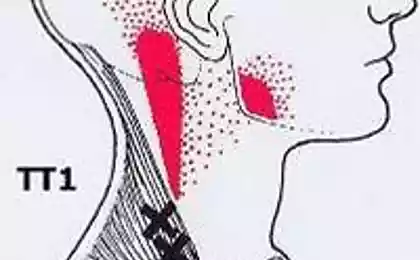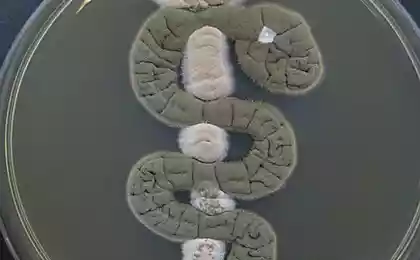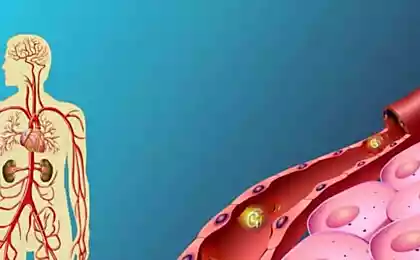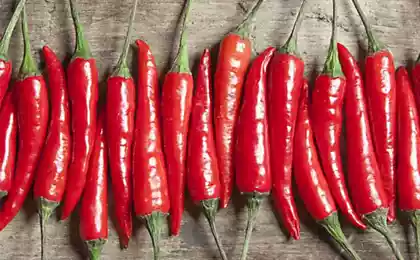543
Scientists have confirmed - the chili is effective against the pain, bacteria, completeness and diabetes

Chili is not only beloved Tabasco. It is known for its medical properties and the ability to maintain the body in healthy condition. Botanists refer it to the family Solanaceae, genus capsicum. Scientific name — Capsicum annum. His closest "relatives" in the family Solanaceae (nightshade family) — tomato, potato and eggplant. Chili pepper originates from Central America. For centuries it was used as one of the main spices for Mexican cuisine. The whole world introduced him to Spanish and Portuguese. It has spread widely in the 16th and 17th centuries, and to this day remains one of the most popular spices in many parts of the world.

Resource Nutrition And You told a lot of interesting things about this healing spice. In the world are cultivated several varieties of chili peppers. Bush pepper is small, it remains green all year round and has a tree-like stem. The plant reaches a height of one meter. The flowers of chili — white. After flowering Bush formed fruit various sizes, shapes and colors. It depends on cultivated varieties of peppers — from the tiny and extremely sharp Nag Jalokiya varieties grown on the Indian subcontinent to the Mexican variety, having a sufficiently mild flavor. The sharpness of chili is measured in "Scoville heat units" (SHU). On this scale, the sharpness of pepper is taken as 0.
Inside each pepper there are numerous small, round, flat seeds are white or cream colors. They are attached to located at the center of the fruit white the placenta.
Harvest chili peppers are harvested when the fruit is still green or when they become Mature and dried. In the General case of pepper it is time to collect when they ripen and become red. The sun dries them out and they become smaller in size.
Chili has a strong spicy taste that is provided to its composition of active alkaloid compounds — capsaicin, capsanthin and capsorubin.
The benefits of chili for health

Chili in incredible amounts contains plant chemicals known for their ability to prevent disease and keep the body in a healthy condition.
It contains the healthy alkaloid compound capsaicin, which makes it such a strong flavour.
Studies on laboratory mammals have shown that capsaicin has anti-bacterial, anticarcinogenic, analgesic and anti-diabetic properties. It was also discovered that he is able to reduce the level of LDL-cholesterol in those who are prone to obesity.
Fresh green and red chili peppers are rich in vitamin C. In 100 grams of pepper contains 143,7 milligrams of vitamin C, which is 240% of the recommended daily allowance. Vitamin C is a powerful water soluble antioxidant. He takes part in the synthesis of collagen in the human body. Collagen is one of the main structural proteins necessary to maintain the integrity of blood vessels skin organs and bones. Constant consumption of vitamin C rich products helps to protect against scurvy and boosting the immune system, develops resistance against infectious agents and also cleans the harmful promoting agents, free radical oxygen in the human body.
Chili also acts as a good source of such antioxidants as vitamin a, flavonoids, beta - and alpha-carotene, lutein, zeaxanthin and cryptoxanthin. These are contained in the pepper antioxidant substances help the body protect itself from the harmful effects of free radicals generated by stress and disease.
Chili pepper in sufficient quantities and also contains the minerals potassium, manganese, iron and magnesium. Potassium is an important component fluids of the cells and organism, helps control heart rate and blood pressure. Manganese acts in the body as a precursor to antioxidant enzyme called superoxide dismutase.
Chilli also contains notable amounts of B-complex vitamins, nicotinic acid, pyridoxine (vitamin B6), Riboflavin and thiamin (vitamin B1). These vitamins play an important role in the human body and must be replenished from external sources.
Selection and storage of Chile peppers

Chilli on the market in fresh form and also dried and hammer. Preference is desirable to give a fresh pepper, not myotomy, which may include impurities.
Give preference to retaining the brightness of the color fruit. They can be green, yellow, orange or red. You should choose a pepper with a healthy stalk, small size, no damages and stains.
The chili can be refrigerated in specially designed plastic containers. It retains its freshness for weeks. Dried whole chili pepper is also sometimes you can find on sale. It is stored at room temperature in a cool dark place. In an airtight container it can be stored for several months. It can grind to the state of powder, using a special grinder for spices.
The use of chili in medicine
Chili contains chemical compound capsaicin. Capsaicin and similar compounds used in the preparation of ointments and rastirok, as it has astringent, pulls and analgesic properties.
These funds are used for the treatment of joint pain, and pain caused by postherpetic neuralgia, and muscle pain.
Precautions
Contained in chilli capsaicin makes acute this popular seasoning. Capsaicin has irritating effects on the oral cavity, tongue and larynx.
Capsaicin causes local inflammation when in contact with delicate mucous membranes of the mouth, throat and stomach. It causes a burning sensation, as its impact is perceived as feeling hot nerve endings of the mucous membranes. If for dessert, serve a cold yogurt, that's called capsaicina painful burning sensation can be weakened, thus reducing the concentration of the substance and reducing its contact with the mucous membrane.
Do not touch your eyes with your hands, which may be the remains of chili peppers. In case of irritation, flush eyes with clean, cold water.
Chili peppers can worsen the condition in gastroesophageal reflux disease.
Certain chemical compounds like aflatoxin (fungal origin) that might be found in chili peppers, known to cause cancer of the stomach, liver and colon.
Nutritional value of chili

In parentheses are the percentage of the daily allowance. Nutritional value is based on 100 grams fresh red chili peppers according to information from the Ministry of agriculture of the United States.
General information:
energy value — 40 kcal (2%);
carbohydrates — of 8.81 grams (7%);
protein — 1.87 grams (3%);
fats — 0.44 grams (2%);
cholesterol — 0 milligrams (0%);
fiber, part food — 1.5 grams (3%).
Vitamins:
folate — 23 micrograms (6%);
Niacin — milligrams 1,244 (8%);
Pantothenic acid — 0,201 milligram (4%);
pyridoxine (vitamin B6) — to 0.506 mg (39%);
Riboflavin (vitamin B2) — 0.086 milligram (6,5%);
thiamine (vitamin B1) — 0.72 milligrams (6%);
vitamin a — 952 international units (IU, IU) — 32 %;
vitamin C — 143,7 milligrams (240%);
vitamin E is 0.69 milligrams (4,5%);
vitamin K — 14 micrograms (11.5 per cent).
Electrolytes:
sodium — 9 mg (0,5%);
potassium — 322 mg (7%).
Minerals:
calcium — 14 mg (1,5%);
copper — 0,129 mg (14%);
iron — 1.03 mg (13%);
magnesium 23 mg (6%);
manganese — 0,187 mg (8%);
phosphorus 43 milligrams (6%);
selenium is 0.5 micrograms (1%);
zinc — 0.26 mg (2%).
Phytonutrients:
beta-carotene (ß-carotene), which is rich in carrots — 534 micrograms;
alpha-carotene (α-carotene) is 36 micrograms;
beta-cryptoxanthin (ß-cryptoxanthin) — 40 micrograms;
lutein-zeaxanthin — 709 micrograms.

Source: hi-news.ru























